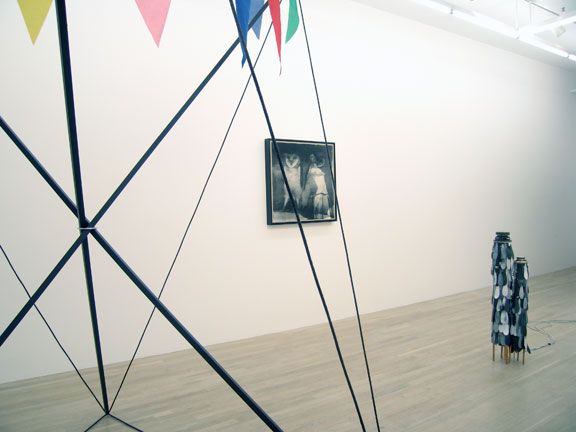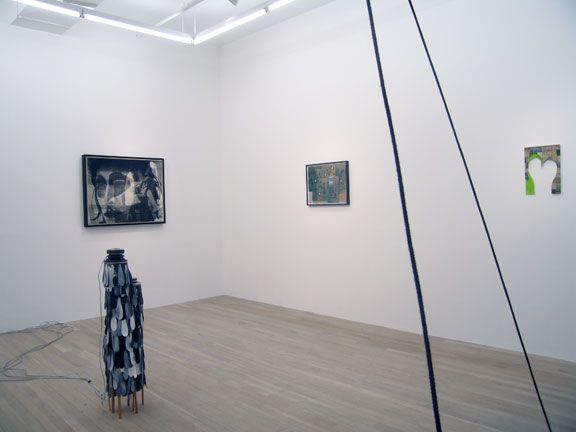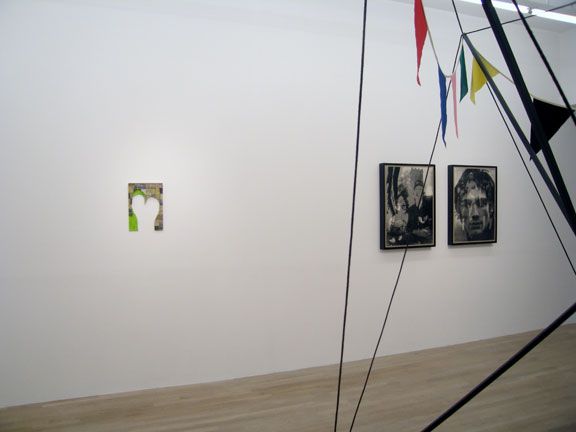Jacob Dahl Jurgensen
David Noonan 23 March 2006 - 21 April 2006
Foxy Production presents recent work by FRANK HANNON, JACOB DAHL JURGENSEN and DAVID NOONAN, three London-based artists who examine interconnections between memory, performance, and ritual. Making the known seem uncanny, they mix references and genres to explore how common practices and codes can determine notions of self.
Frank Hannon, in his first New York exhibition, presents My Name Is Milton, a sound-sculpture that on first glance resembles a tribal totem. Featuring monochromatic paper scales, and a recording of “Paradise Lost” read in a London pub, the work paradoxically evokes a contemporary but lost time, like a relic of the present. It considers how communal memory is maintained, and how personal stories inter-relate with accepted histories. Hannon also presents two collages, comprising layer upon layer of paper, canvas and paint, with historical images and the repeated scale motif. Creating a dialogue between abstraction and figuration, they express the tension between individual and group mythologies.
Jacob Dahl Jürgensen, also in his first New York exhibition, presents a large geometric sculpture, comprising thin black strips of wood secured with twine and laced with multi-colored bunting. With an almost gravity defying lightness, the work resembles the skeletal remnants of an arcane public ritual. Simultaneously festive and dark, it alludes to the ways shared customs or protocols can bear upon the individual and shape consciousness. A smaller geometric sculpture, a kite-like tetrahedron constructed from wood, vinyl and string, recalls and re-contextualizes Buckminster Fuller’s designs and his positivist belief in the social role art and technology.
David Noonan presents a series of screen-prints on canvas of superimposed images that seem to have been gleaned from old drama magazines, and nature and history books. Exploring the experience of memory, Noonan dissolves image into image, like the over-determined symbols of restless dreams. The works suggest narratives of desire, violence, or celebration that have been filtered through the mannered representations of the theatre. These affecting and highly original mise en scènes can trigger a nostalgic response that is underscored by the formality of the individual images. Noonan constructs an emotional struggle between personal stories and imposed histories.








